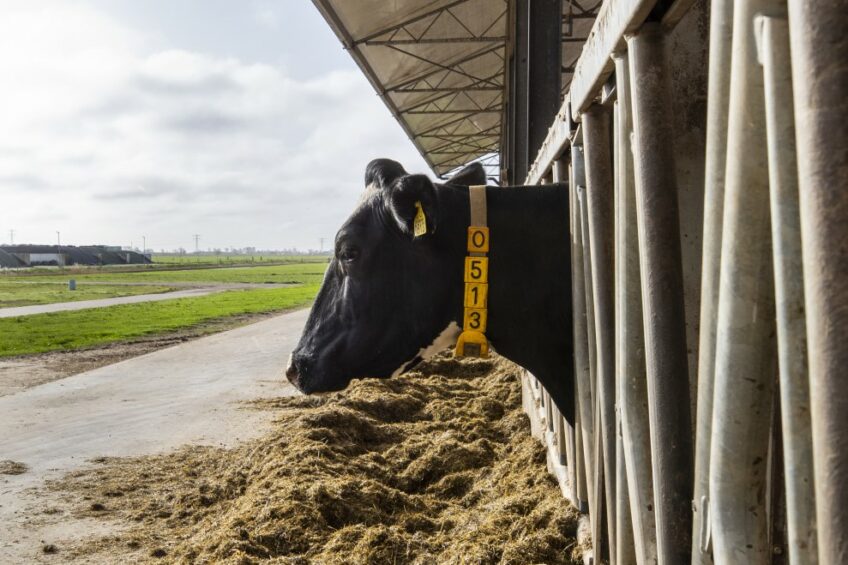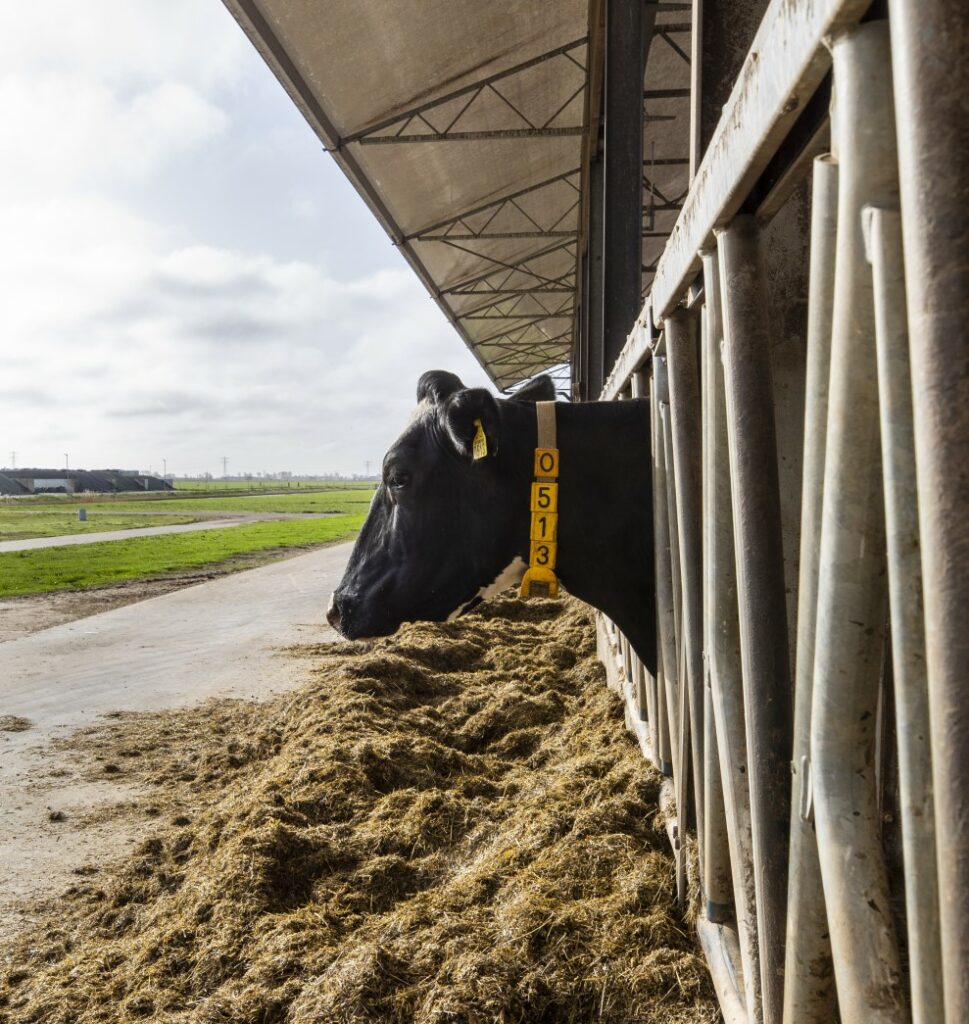Nutrition as a tool to adapt to heat stress

Production responses to heat stress may vary depending on factors such as cattle breed, body size, milk yield and degree of exposure to heat stress. Several feeding strategies will help dairy cows adapt to hot climates.
Animals go through heat stress when their body temperature is higher than the optimal range specified for normal activity because the total heat load is greater than the capacity for heat dissipation.
Temperate dairy cows are particularly susceptible to heat stress and often show marked decreases in feed intake and productivity in hot climates or when introduced into tropical or subtropical regions for genetic improvement of local breeds. We take a look at some nutrition strategies that will help in adapting dairy cows to heat stress conditions.
Theories of heat stress effects
Under heat stress conditions, a great deal of blood circulation is directed to the peripheral parts of the body to feed the sweat glands instead of being directed to the rumen to stimulate motility. With the lower rate of rumen motility, there will be only small amounts of feed passing towards the lower part of the gastrointestinal tract, thereby making the animals feel full and have no desire to eat more for long periods.
Heat-stressed animals not only eat less but also return less weight per unit of intake. Animals expend more energy activating heat-dissipating processes such as sweating, heartbeat and respiration, with only a little energy left over for productive purposes.
Heat stress also affects pancreatic activity and its capacity to produce the enzymes needed to digest carbohydrates and proteins when reaching the intestinal area, thereby further reducing the utilisation of such nutrients for productive purposes.
In addition to its effects on animals, heat stress also affects the yield and quality of animal feed as it leads to growth depression, enzyme inactivation and reduced metabolic synthesis, in addition to its effects on germination, vitamin stability and increasing mycotoxin levels in feeds.
Nutritional strategies
For animals under heat stress conditions, the strict recommendation is to manage diet composition, properly supplement essential nutrients, consider timing and frequency of feeding and supply adequate water.
Concentrate-to-roughage ratio
Reduction in feed intake under heat stress may be recovered partially by increasing metabolisable energy (ME) and nutrient densities of diets. This may be a nutritionally and possibly economically feasible means to increase milk yield, particularly if concentrates are available and the milk price-to-concentrate ratio is favourable. The ME requirement for maintenance rises by 10-30% at 30-40°C compared with 18-20°C because extra energy is needed for heat dissipation. Therefore, by increasing ME intake (by increasing the concentrate-to-roughage ratio), more ME remains available for productive functions.
Protein nutrition

Feeding protein-deficient diets results in an increased heat load on animals due to increased heat production for the turnover of tissue proteins. Therefore, supplemental protein is needed to alleviate heat stress.
A study was conducted to examine the effect of protein supplementation for Holstein cows during natural heat stress. Dry matter intake was 11% greater with the high-protein diet, and the fat-corrected milk (FCM) was 4.3% higher. Excess protein should, however, be avoided as it would be metabolised and excreted by the cow, a process that creates heat and consumes energy that could be used to produce milk. Adjustment of protein levels may not be possible in some cases, such as with cows grazing very high-protein oat pastures.
Protected fat
It makes sense that enhancing ration energy density by utilising fats could be particularly beneficial during hot weather. However, research on the effects of feeding high-fat rations during hot weather has yielded inconsistent results. This is probably because it is very easy to overfeed unprotected fat sources, such as whole oilseeds, when the cow’s feed intake is significantly reduced due to heat stress.
If fat is overfed, then the negative effects of the fat on fibre digestibility will negate any possible gains with increased ration density. Because bypass fats do not affect rumen fermentation, they should probably make up a greater percentage of the total fat included in the ration during hot weather.
Mineral supplement
Supplementation of minerals, particularly potassium during heat stress is a recommended practice, considering that there are 5-fold increases in potassium loss from the skin via sweating from cows under heat stress compared to those under normal temperature. Increased use of concentrates for heat-stressed cows also contributes to higher potassium requirements, since most concentrated feeds are potassium-deficient.
Potassium supply should be considered along with the supply of sodium, since both are closely related to the regulation of many body functions. Urinary losses of sodium increase during heat stress, due to decreased levels of blood aldosterone. Such losses should then be balanced out through dietary supplementation. Studies have shown some improvement in milk yield with 1.5% potassium and 0.38% sodium but when the 1.5% potassium was combined with 0.67% sodium, milk yields were superior.
Vitamin supplement
Among vitamins, niacin (vitamin B3) was studied for its action on vasodilatation in the mammalian and for its role in lipid metabolism. It helps to alleviate heat stress both by increasing evaporative heat loss from the body and also by reducing the effects of heat at the cell level. Including niacin (6 g/cow/day) may be beneficial as it reduces skin temperature and increases milk yield. Supply of vitamin C may also be recommended in this case due to the effect of heat stress on the plasma and tissue levels of this vitamin.
Buffers
Buffers such as sodium bicarbonate should be used during hot weather, especially in low-fibre, high-concentrate diets. Diets should contain at least 0.75% sodium bicarbonate on a dry matter basis. This amounts to a minimum of 0.15 kg of buffer per day for a cow consuming 20 kg of dry matter.
Frequent feeding
As a further strategy, increasing feeding frequency should reduce heat production because this would promote a uniform rate of absorption of nutrients and spread the total heat increment due to feeding over a longer period. This should not overload the animal’s heat-dissipating mechanism at any one period. Frequent feeding of heat-stressed cows also helps prevent the milk fat problem by maintaining uniform rumen fermentation and permitting a higher intake of concentrates without a decrease in the rumen pH or the acetate-to-propionate ratio.
Feeding time
By feeding cows in the early morning (5-6am), the heat of digestion peaks at 8am to 9am and allows the cow to dissipate some of that heat before the day gets hot. A cow fed at 8am will have her peak of heat production at 11am to noon when the day is hotter, which is undesirable. Similarly, cows fed during the evening will be more comfortable and likely to consume feed, and their peak of heat production will occur during the night when environmental temperatures are lower.
Water
Under heat stress conditions, the cow loses water via the skin and respiration as she works to minimise her rise in body temperature. In one study, the loss of water increased by 59% via the skin and 50% via respiration when ambient temperature increased from 18°C to 30°C. It is, therefore, important to provide cool, clean water ad libitum and eliminate any management factor that may inhibit cows from drinking.
References are available from the author upon request.
Join 13,000+ subscribers
Subscribe to our newsletter to stay updated about all the need-to-know content in the dairy sector, two times a week.










